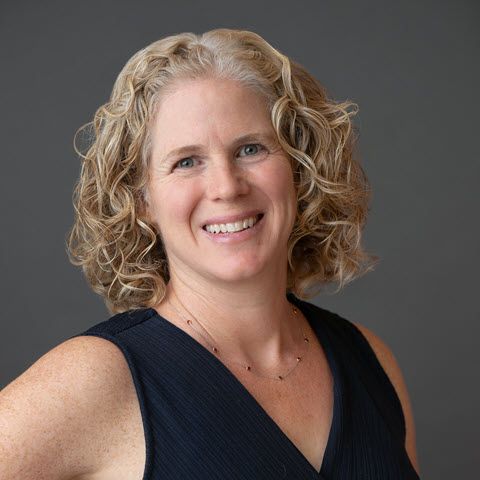With a rapidly evolving landscape ahead, the energy industry finds itself at a crossroads, facing an unprecedented array of challenges—from extreme weather events to the urgent need for sustainability and equity.
To shed light on how utilities are adapting to this complex landscape, I sat down with Tom Martin, vice president of data science commercialization. Tom shared insights into some of the growing complexity utilities are currently facing, as well as the pivotal role data-driven decision-making plays in shaping utilities’ response to the pressing issues of our time.
Sannie Sieper. As we look to situate data science in the world of utilities today, it would be helpful to get your perspective on what utilities are facing. The environment they operate in and the challenges they face appear to be significant and growing in complexity.
Tom Martin. Yes, that’s spot on. Utilities today are being asked to do a lot more with less. Utilities have always worked hard to operate a safe, reliable, affordable grid. But the rules of the game started to change about 10 years ago with Superstorm Sandy. Suddenly, it was no longer enough to be reliable under normal conditions, the grid now had to be resilient in the face of unexpected superstorms.
Then you had other major weather and climatic impacts like the deep freeze in Texas and the California wildfires. The National Oceanic and Atmospheric Administration has been tracking these events, and—no surprise here—they’ve been growing in number and cost, to the point where we’re seeing 20 or more billion-dollar disasters per year in the 2020s, with 23 already recorded through September 11, 2023. The Maui wildfires not only factor significantly in this tally but also change how all utilities have to think about wildfire risk.
We’ve seen a similar game-changing arc in customer equity. Ten years ago, equity meant utilities offering discounts to low- and moderate-income customers, but now we’re looking at how and whether a utility’s reliability and resiliency investments are being distributed fairly across customer segments. And it’s not just a question of low income versus high income; it’s, Are urban and rural customers gaining the same benefit from grid investments? And many, many more permutations.
I liken all of these changes to juggling. Utilities used to have a few balls in the air. Now it’s 10 or more, and your resources have to be spread out across all 10 with no real relief in sight because rates can’t rise exponentially to keep pace with the demands.
SS. So what can utilities do to make their resources go further?
TM. This is where data science comes in. The only way utilities can stretch to meet these many contemporaneous, often competing, demands (safety, reliability, resiliency, affordability, equity) is by using data-driven decision-making to optimize areas that aren’t as efficient as they need to be and use that newfound efficiency to create headroom to focus on these other priorities that have been added to the mix.
That’s really the tipping point we’ve seen over the past couple of years. We’ve got so many balls in the air that we need the efficiency created by data science and data-driven decision-making because the environment that we’re operating in has become so much more complex and there are so many more things that are expected of utilities. It’s a huge challenge, and it’s one that has to be solved if we’re going to successfully decarbonize as an industry and meet the existential challenge of climate change.
Adding even more urgency to these matters are the Maui wildfires, which have triggered a nationwide reckoning with the wildfire threat. Wildfires used to be a “California problem.” Then that expanded to some of Colorado, Arizona, and even the Pacific Northwest. But now all of a sudden, we get this tragic situation in Hawaii, a place that’s lush and typically gets a lot of rainfall and doesn’t have a hugely rural forested population.
It will be a while before the dust settles and we really have clarity on exactly what happened in Maui. But the fact that so many people are pointing at Hawaiian Electric, rightly or wrongly, has led utilities across the country that didn’t think wildfire was one of the priorities they had to manage to now think about it. Now it’s on the list. Utility companies on the East Coast are having board conversations around wildfire. That wasn’t happening a couple of years ago. Now it’s one more ball utilities have to keep in the air.
SS. What can utilities do to keep pace with this onslaught?
TM. I think the solution starts with a fundamental understanding and acknowledgment that:
- The task we’re given of delivering electricity to customers has risks; and,
- We can never buy risk all the way down to zero. We can never eliminate all outages and all risks.
We have to be OK with that, and so do regulators and customers.
And while all this may make intuitive sense, I think there’s power in admitting it out loud, being intentional about it, and owning it. Doing so helps us shift our priority from risk whack-a-mole to making sure every dollar we’re spending to address risk is going toward the things that are going to eliminate the most risk.
Put another way, if we lived in a world where we could eliminate all risk, it wouldn’t matter how we optimize for risk. We wouldn’t need data science. We’d just need to identify the risk and spend whatever is needed to eliminate it.
But that’s a fantasy world. We don’t have that luxury.
So what we need to do is find the best deals—that is, find the value where we can get the most ROI in terms of improved safety, improved reliability, and improved performance of our grid because we’re capital and resource constrained.
Recognizing these constraints is key. It forces us to think differently, more productively. The question then becomes, If I have $1 or $1,000 or $1,000,000 that I’m spending to reduce some sort of risk—be it storm resiliency or wildfire or grid loading during a heat or cold event—or just ensure normal reliability, how do I make sure each dollar is going toward the thing that’s going to move the needle the most because it can’t go toward everything I would want it to?
The good news for utilities is that this is something data science can and does solve. We now have the data, the computing horsepower, and the data science processes to run thousands and thousands of spending scenarios to optimize investments to deliver the most value to the grid—a concept we call risk-spend efficiency. Whereas previously we often didn’t have the data, and we certainly didn’t have the computing capability to handle this sort of analysis, we do now.
Over the last decade, utilities have faced a growing number of game-changing challenges. Now, data science is unlocking game-changing solutions.


